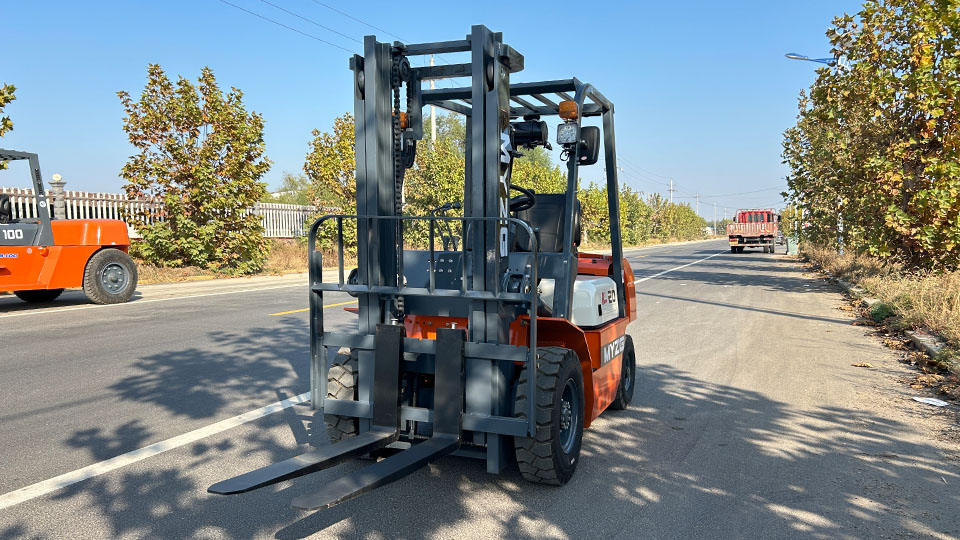
Search Strategy for Your Technical Guide
I will now conduct searches to ensure the steps and legal requirements are current and accurate for the major regulatory bodies. The search results confirm the three-part process and provide critical regulatory details for the US, UK, and Canada, which is perfect for a highly technical guide.
��️ Technical Article Outline: How Do I Get Certified to Drive a Forklift?
I. Introduction: Defining the Path to Competence
The Goal: Certifying competence, not just a license. Reiterate that the process is mandated by law (OSHA, HSE, CSA) and culminates in employer authorization.
The Operator’s Responsibility: You must be proactive—no employer can authorize a person under 18 years old (US Federal law) or one who hasn't demonstrated competence.
The Three Universal Stages: Briefly introduce the three required stages for certification, forming the structure of the article: Formal Instruction, Practical Training, and Evaluation.
II. Stage 1: Formal Instruction—Mastering the Theory
1. Finding the Right Program (The "Where")
Online vs. In-Person: Explain the legitimacy of online training: it satisfies the Formal Instruction (classroom) requirement, but not the full certification. Any program claiming full certification without a hands-on component is non-compliant.
The Employer's Role: The ideal path is often employer-provided training, as it inherently covers the required site-specific information.
Reputable Providers (US & Global): Look for providers that adhere to the relevant standards (e.g., OSHA-accepted, RTITB/AITT accredited).

2. Mandatory Course Content (The "What")
The OSHA Blueprint: Detail the specific topics required by 29 CFR 1910.178(l)(3) that must be covered, including:
Operating instructions, warnings, and precautions for the specific truck type.
Differences between the truck and an automobile (e.g., rear-wheel steering).
Controls, steering, and maneuvering.
Vehicle Capacity and Stability: How to read the data plate, understanding the load center, and the instability triangle.
Pre-use inspections (required before every shift).
Refueling and battery charging procedures.
Assessing Knowledge: Formal instruction concludes with a written or electronic test (typically requiring a score of 70% or higher).
III. Stage 2: Practical Training—Hands-On Skill Development
1. The Supervised Learning Environment
The Trainer’s Qualification: The training must be performed by a person who has the "knowledge, training, and experience" to train operators and evaluate their competence (OSHA 1910.178(l)(2)(iii)).
Demonstration: The trainer must first demonstrate the required skills and safe operating practices.
Trainee Practice: The trainee then operates the equipment under direct supervision. This practice should be in an area that does not endanger the trainee or other employees.
2. Skill Modules for Different Truck Classes
Class-Specific Requirements: Emphasize that training must be specific to the Class of truck (e.g., Class I: Electric Counterbalance vs. Class IV: Internal Combustion, Cushion Tire). Operating a stand-up truck is drastically different from a sit-down.
Key Practical Maneuvers: Detail the essential skills practiced:
Pre-operation checks and maintenance reporting.
Starting, stopping, and controlled acceleration/deceleration.
Maneuvering in reverse and tight spaces (simulating narrow aisles).
Picking up, traveling with, and placing loads (understanding load stability).
Working safely near loading docks, ramps, and grades.
IV. Stage 3: Evaluation and Authorization—The Final Barrier
1. The Performance Evaluation (The "Test")
The Competency Standard: This is the final and most crucial step. The employer (or qualified third-party) assesses the operator’s ability to apply theory and practical skills in the actual workplace environment.
Evaluation Checklist: The evaluator uses a checklist to observe performance in key areas (e.g., smooth travel, proper horn usage, correct load handling, adherence to site traffic rules).
The Final Sign-Off: Upon successful completion of all three stages (Formal, Practical, Evaluation), the employer issues the Certification Document and/or an Operator Card.
2. Record Keeping and Employer Responsibility
Mandatory Documentation: Detail the required records (29 CFR 1910.178(l)(6)):
The name of the operator.
The date of the training and the date of the evaluation.
The name of the person(s) who performed the training and evaluation.
The Golden Rule of Transferability: Stress that certification is site-specific. While the theoretical knowledge is portable, a new employer must perform a new site-specific training and performance evaluation before authorizing operation.
V. Maintaining Compliance: The Recertification Cycle
1. The Three-Year Rule (The US and Canada Standard)
OSHA and CSA Mandate: Certifications are generally valid for a maximum of three years. Recertification involves refresher training (formal and practical) and a re-evaluation of performance.

2. Immediate Retraining Triggers
Explain that the three-year clock can be reset prematurely by mandatory retraining if:
The operator is observed operating the truck unsafely.
The operator is involved in an accident or near-miss incident.
The operator is assigned to drive a different type of truck (e.g., moving from a sit-down to an order picker).
Changes occur in the workplace environment (e.g., new machinery, new racking, structural changes).
3. UK-Specific Accreditation (HSE)
UK Focus on Standards: Certification in the UK adheres to the HSE Approved Code of Practice (L117). Operators are often trained and tested to standards set by bodies like RTITB or AITT.
Refresher: While there is no rigid legal expiry, L117 recommends refresher training every three to five years, or when necessary due to incidents or observed poor practice. The emphasis is on continuous competence.
VI. Conclusion: Your Passport to PIT Operation
Summary: Certification is a safety process, not a state license. It requires commitment to theory, practical application, and continuous adherence to safety standards.
Final Thought: Your certification card is proof that both you and your employer have met their legal duties, protecting lives and livelihoods.
Name: selena
Mobile:+86-13176910558
Tel:+86-0535-2090977
Whatsapp:8613181602336
Email:vip@mingyuforklift.com
Add:Xiaqiu Town, Laizhou, Yantai City, Shandong Province, China